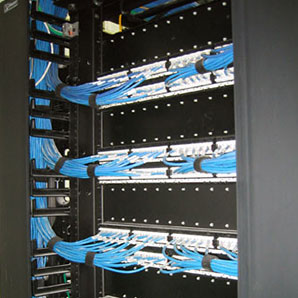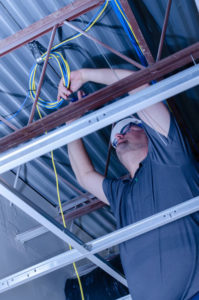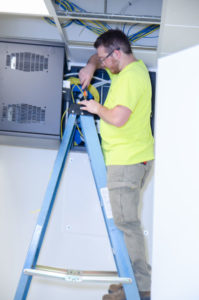In today’s digital age, a reliable network infrastructure is essential for any business. The proper cabling and networking equipment can make all the difference in the efficiency and effectiveness of your organization. Here are three things you need to know about network infrastructure and cabling.
The Importance of Proper Planning
When it comes to network infrastructure and cabling, proper planning is essential. This includes a thorough understanding of your business’s needs, such as the number of devices that will be connected to the network, the layout of your office space, and the types of applications you’ll be using.
One of the most important considerations is the type of cabling you’ll be using. The two most common types of cabling are copper and fiber optic. Copper cabling is less expensive and generally used for shorter distances, while fiber optic cabling provides faster data transmission over longer distances. It’s crucial to choose the right type of cabling for your business’s needs to ensure optimal performance and minimize the risk of downtime or other issues.
The easiest way to do this would be to leave it to a team of experienced technicians like the ones we employ at RCH Communications, because our professionals will know exactly what technical infrastructure your business needs in order to thrive.

The Benefits of Structured Cabling
Structured cabling is a standardized approach to cabling that uses a system of pathways, spaces, and components to organize and support the cabling infrastructure. This type of cabling is often used in larger buildings or multi-level offices to ensure consistent and reliable network connectivity.
Structured cabling has several benefits, including:
Improved organization: With a standardized cabling system, it’s easier to identify and troubleshoot issues, saving time and money.
Scalability: Structured cabling is designed to support future growth and expansion, so your network can easily accommodate new devices and applications.
Reduced downtime: A structured cabling system minimizes the risk of downtime and other network issues, improving overall productivity and efficiency.
The Importance of Regular Maintenance
Even with proper planning and installation, network infrastructure and cabling require regular maintenance to ensure optimal performance. This includes regular inspections, testing, and cleaning of cabling and network equipment.
Regular maintenance helps to identify potential issues before they become larger problems, minimizing downtime and improving overall network performance. It’s also essential to keep up with updates and upgrades to your network infrastructure and cabling to ensure compatibility with new technology and to take advantage of new features and functionality. Upgrading your system may be costly, but it can be a necessary addition to your business if you wish to grow. Luckily, there are services such as ours that will happily provide you with new network infrastructure at a reasonable price!
As a whole, network infrastructure and cabling are critical components of any business’s IT infrastructure, and they are essential for optimal performance and efficiency. By understanding the planning, the cabling, and the regular maintenance that you need, you can ensure that your business has a reliable and scalable network infrastructure that can support both your organization’s growth and its success. For more details on how we can help you with all of the above, please contact us at any time!



